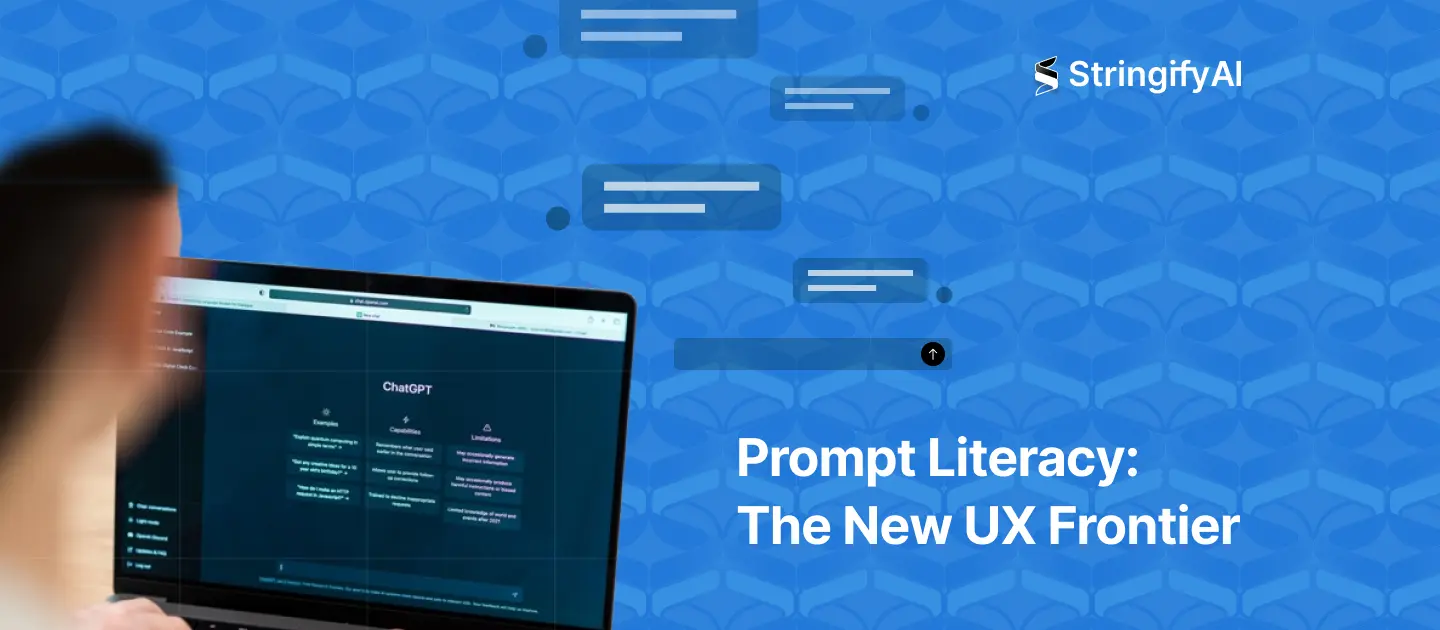Prompt Literacy: The New UX Frontier

Once Upon a Prompt...
In the early days of computing, we had to memorize commands. Then came the GUI, and with it, icons, dropdowns, and drag-and-drop salvation. Finally, software made sense to more people.
But now, the interface is disappearing again.
When you interact with an LLM-powered system, you don’t need menus. You need language. You need to express what you want—clearly, flexibly, and sometimes creatively.
Welcome to the era of prompt literacy
Wait, What Is Prompt Literacy?
Prompt literacy is the skill of translating human need into machine-readable intent. It’s the ability to:
- Ask clearly
- Think iteratively
- Refine without frustration
It’s not just about typing questions. It’s about shaping conversations with AI.
And just like we once taught people how to right-click or pinch-to-zoom, we now need to teach them how to talk to systems that listen.
Three Types of Prompt Users
1. The Guesser
Takes a shot in the dark: "Umm... make chart?" Often confused, often surprised. Needs guardrails.
2. The Googler
Tries long, overly structured queries: "How to generate sales performance data Q1 vs Q2 in table?" Better. Still rigid. Needs confidence.
3. The Collaborator
Treats the AI as a partner: "Can you help me compare Q1 to Q2 sales, but focus on churn risk?" This is the sweet spot. Clear, adaptive, conversational.
What Designers Can Do
Just like early operating systems came with starter guides, prompt-first systems need embedded literacy support. Here’s how we design for it at Stringify AI:
1. Show, Don’t Just Tell
Pre-filled prompts, smart examples, evolving as users type.
2. Embrace Ghost Writing
System-generated scaffolding: "Looks like you're asking about X. Want to include Y?"
3. Visual Mental Models
Think: "This is a conversation with an expert." Use metaphors and framing.
4. Feedback as Coaching
When the system misses, it explains why. Prompt tips, not just errors
Prompt Literacy Is Product Literacy
Understanding how to express a need to an AI model is becoming the new baseline skill for interacting with modern software. It’s not just an input box—it’s a mental model shift.
Design isn’t disappearing. It’s going cognitive.
Our job as builders? Make sure users don’t feel dumb for not knowing what to ask. Instead, help them feel empowered to ask anything, and confident they’ll be heard.
Final Thoughts
Prompt literacy will define the winners and wallflowers of the LLM era. The good news? It can be taught. It can be scaffolded. It can be designed.
And the best prompt-first systems won’t just listen. They’ll teach people to speak AI.
Coming up next: a visual one-pager for designers and product teams on how to bring these principles to life.